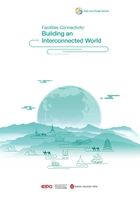
Preface
Infrastructure plays a vital supporting role in economic activities and people’s lives. These fundamental facilities, whether improved or newly built, not only reduce the transaction costs of economic activities, but also help to ameliorate people’s living standards. Ever-deepening economic globalization in the 21st century renders infrastructure connectivity a sure path towards reducing the cost of international economic activities and promoting international economic and trade growth. It is hence a fundamental priority area of the Belt and Road Initiative. Since the Initiative was proposed in 2013, China and relevant countries and regions have strengthened their infrastructure cooperation on highways, railways, aviation, sea transportation, energy resources, and information technology. Together they have built domestic facilities for the relevant countries and also cross-border infrastructure facilities, as well as an infrastructure network spanning regions and the world as a whole. In consideration of the resource advantages and development demands of countries along the Belt and Road, the China-Mongolia-Russia Economic Corridor, New Eurasian Land Bridge Economic Corridor, China-Central Asia-West Asia Economic Corridor, China-Indochina Peninsula Economic Corridor, China-Pakistan Economic Corridor, and Bangladesh-China-India-Myanmar Economic Corridor have been built to connect these regions and sub-regions, between whom communications hitherto have been negligible, break the hierarchical “core-periphery” international development model, and provide new opportunities for regional and global economic integration. The facilities connectivity drive under the Belt and Road Initiative has been welcomed by the governments and peoples of various countries. China’s concept of cooperation on global infrastructure facilities connectivity is creating a new international cooperation mode.